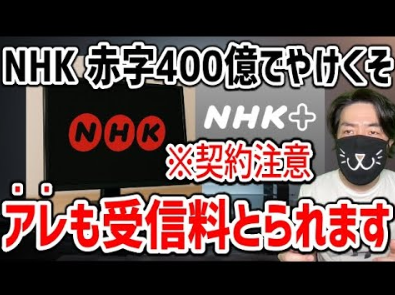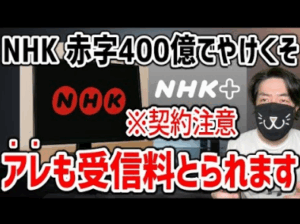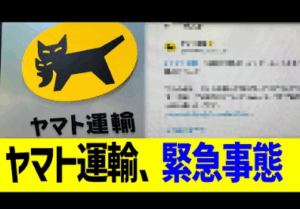【Shigeo’s Review】
This video provides a very detailed explanation of the latest developments regarding NHK’s subscription fee collection, and explains in a concrete and easy-to-understand manner how NHK aims to maintain and increase its subscription fee income, especially in the midst of the growing trend away from television.
First, he introduced the severe business situation, with a deficit of 57 billion yen in FY2020 and another 40 billion yen expected in FY2025.
It should be noted that one of the major reasons for this is the reduction of subscription fees implemented in 2023: the monthly fee for BS community subscriptions was lowered by about 10%, resulting in a decrease in revenue, but cost reductions did not follow suit, thus increasing the deficit.
Against the backdrop of this financial difficulty, NHK has embarked on measures to strengthen the collection of subscription fees. The “surcharge funding system for subscription fees” pointed out in the video is particularly shocking
The video shows how the “surcharge system” is being implemented. It is a draconian measure that allows NHK to charge households that own TV sets but have not paid their subscription fees twice the normal fee, and several court cases have resulted in payment orders. This is a system that no longer has the coercive force of a normal service provider, and indicates that NHK’s means of collection are getting stronger.
What is even more surprising is that the scope of subscription fee claims has expanded to include not only TVs but also car navigation systems.
There have been cases of high charges (over 10 million yen), indicating that TV reception devices in cars are no longer an escape route. This move shows NHK’s desperation to collect subscription fees even from young people who do not own a TV.
Most important of all is the use of an Internet distribution service called NHK+.
Until now, those who did not own a TV were not required to sign a subscription agreement, but starting this October, NHK will make online distribution a mandatory service, enabling smart TVs and tunerless TVs (including tunerless TVs) to watch NHK programs in real time. In other words, the conventional wisdom that “not owning a TV = no subscription fee” is crumbling.
The video also carefully explains the difference between NHK+ and NHK on Demand: NHK+ includes real-time and missed programs and is available free of charge to subscribers only, while NHK on Demand is a paid subscription service that allows viewers to watch past programs.
This difference is important for viewers, and it is reported that there are many things to be aware of, especially in terms of contract and cancellation conditions when using NHK+.
In addition, NHK’s announcement that it will begin simultaneous distribution via an app for TVs is a wake-up call for many “no TV” users, as it could also apply to tuner TV users.



